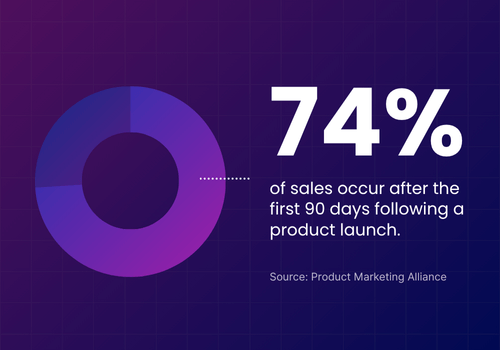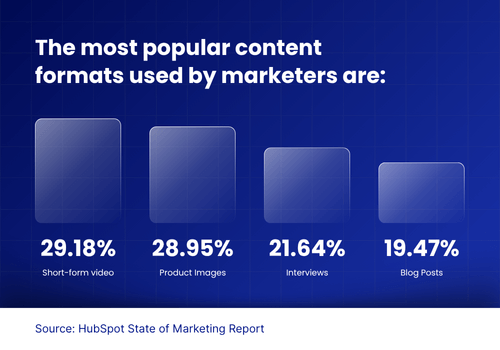
Product marketing sits at the crossroads of product, sales, and customer success.
In a B2B SaaS business, its scope is both foundational and far-reaching: from go-to-market execution and customer enablement to competitive positioning and sales alignment.
Because of this breadth, product marketing efforts can easily become misaligned, outdated, or siloed across teams.

That’s where a product marketing audit becomes indispensable.
In this article, we’ll walk through a structured, seven-part framework to help you assess your product marketing effectiveness and surface opportunities to improve impact across your entire marketing funnel.
1. Revisit Your Customer Personas
Before you evaluate any tactic or campaign, step back and remind yourself who you're building this for.
Too often, buyer and customer personas go untouched after initial development, despite the fact that markets shift and customer expectations evolve.
Start your audit by refreshing your understanding of both your ideal buyer personas and your most loyal users.
Ask whether your existing profiles still reflect current buyer pain points, goals, and buying triggers.
Have new roles or industries entered your sales pipeline? Are there behavioral patterns among power users that could inform future messaging or feature prioritization?
If needed, rework your personas so they’re more insightful and more actionable. This sets a clearer benchmark for evaluating the relevance and effectiveness of everything that follows.
Big Takeaway
Your buyer and customer personas are like a camera lens. If they’re outdated, every insight that follows will be distorted.
2. Reevaluate Your BoFu Messaging and Product Positioning
Bottom-of-the-funnel (BoFu) marketing is where strategy meets precision. At this stage, your messaging must bridge the gap between product capability and buyer intent.
Even if your product offering hasn’t changed dramatically, your positioning needs to evolve to stay competitive and relevant.

Examine your messaging for clarity, specificity, and resonance.
Are you emphasizing the most pressing pain points your product solves?
Are your benefits differentiated clearly from competitors?
Is your product narrative cohesive across your website, sales decks, and email flows?
Refining your positioning—even subtly—can sharpen your downstream performance, from MQL conversion to close rates.
Big Takeaway
Even the strongest initial positioning shouldn’t remain static. It adapts to your roadmap, your market, and your customer’s evolving context.
3. Conduct a Competitive Product Analysis
Your product doesn’t exist in a vacuum.
A key part of the product marketing audit is reassessing how you stack up against the competition—not just feature by feature, but in terms of perceived value.
Dust off your competitor comparison documents.
Update them to reflect new product launches, pricing changes, or positioning shifts in the market.
What gaps are your competitors now filling?
Where do you still lead?
What messaging advantages can you claim that others can’t?
Well-maintained competitive analysis is more than an internal reference. It’s a strategic asset that informs everything from website copy to sales objection handling.
Big Takeaway
Competitive analysis isn’t a one-time exercise. It’s a living dataset that sharpens every aspect of your go-to-market. You change. Your competition changes. Customer expectations change. And you need to stay on top of it all to maximize your product marketing efforts.
4. Audit Your Sales Enablement Materials
Product marketing’s role in sales enablement is pivotal.
You’re not just supporting a sales and marketing funnel with positioning, messaging, and content. You’re equipping the team that closes it.

Take stock of all enablement assets currently in circulation. This includes decks, guides, fact sheets, one-pagers, product catalogs, and even sales scripts.
Are they up to date?
Are they tailored for key segments?
Are they consistent with your current product narrative?
Even well-designed materials lose impact when they no longer reflect product changes or competitive realities.
Consider whether any pieces should be retired, revised, or expanded. Think about whether any new collateral is needed based on recent objections, hesitations, or sales feedback.
Big Takeaway
Empowered sales teams close faster.
To feel empowered, they need consistent, current enablement content . This is the foundation of a confident sales team that gets results.
5. Evaluate the Quality of Leads Generated
Having a larger volume of MQLs is great, but the most important factor will be the intent behind them.
An audit is the perfect time to scrutinize your demand generation performance.
Dive into your dashboards and evaluate where your best leads are coming from.
Are certain campaigns consistently producing SQLs, while others inflate your MQL count with low-intent contacts?
Review your lead scoring model. You might discover that a small refinement in scoring or targeting could significantly improve lead quality and sales outcomes.
Are the right attributes weighted heavily enough?
Does the model reflect real-world conversion behavior?
Big Takeaway
Quality leads come from clear targeting and accurate scoring. It’s really important that you don’t let vanity metrics guide your funnel.
6. Review Your Content Marketing Through a Product Lens
Content marketing often skews top-of-funnel, but product-led content is where education turns into evaluation.
Audit your content library and learn whether it’s working hard enough to support the entire funnel.
Focus first on high-impact assets: success stories, landing pages, comparison pages, tutorials, demos, and testimonials.
Ask whether they reflect your current product story.
Are they discoverable? Optimized for search?
Does your content calendar include product-led ideas that match where users are in the buyer journey?

Where you find underperformers, consider a strategy of refresh, rewrite, repurpose, or retire.
Often, small edits to a case study or clearer positioning on a landing page can unlock significantly more conversions.
Big Takeaway
Your overall content plan has to support multiple funnel stages. As such, it isn’t just an acquisition tool or only a trust-building asset. It’s everything.
Make sure that it is always reflecting the product as it exists today.
7. Organize Your Findings and Map an Optimization Plan
An audit is only as valuable as its follow-through.
Once you’ve completed your deep dive, consolidate your insights into a clear, phased plan.
Group your takeaways by theme (messaging, enablement, content, etc.) and identify what’s urgent, what’s strategic, and what needs broader team alignment.
Then, map out when and how you’ll address each point.
A shared calendar or internal playbook can help turn scattered insights into action.
This final step ensures your audit isn’t just a documentation exercise, but rather a strategic roadmap for better results.
Big Takeaway
The value of any audit lies in what it leads to.
Take all of your observations throughout these steps, connect them to actionable steps, and turn these into owned outcomes.
Turning Your Audit Into Action
It’s easy to think of a product marketing audit as simply a practice in finding flaws.
While it’s important to be honest about results, the best audits are forward-looking. It’s an opportunity to take an honest look at your positioning, performance, and alignment, then use that clarity to move forward with focus.
Think positively about the audit. It’s done to reveal opportunity and potential. It helps you optimize what drives conversions, supports sales, and scales growth.
You don’t need to fix everything at once. But you do need to start somewhere. And the best place to begin is from a position of knowledge and understanding for what’s possible.
That’s what an effective product marketing audit provides.
You may also like

How To Use Storytelling In Marketing
Make your customer the hero—use the Hero’s Journey to craft stories that inspire action and build stronger brand connections.

How Hypelocal Won Over An Online Jewellery Retailer With A 937% ROAS
Hypelocal’s ad strategy provided this jewellery retailer with $420K revenue and 937% ROAS.



